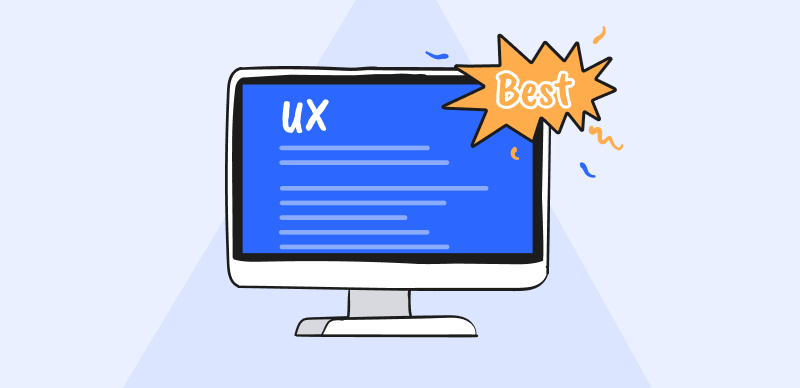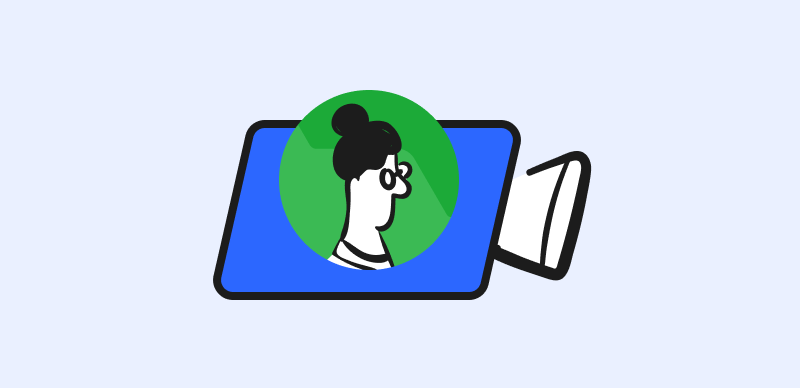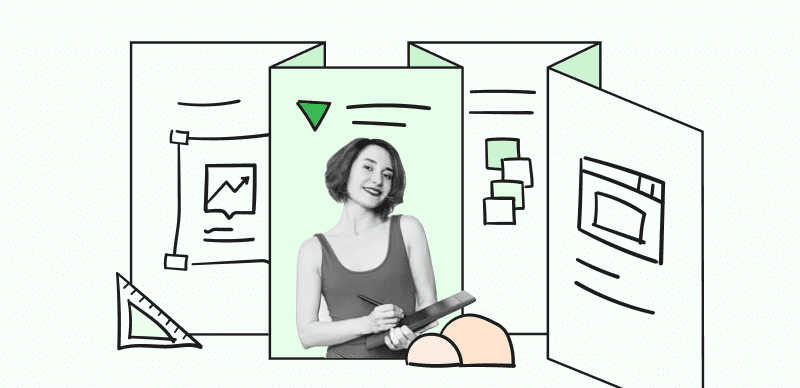User-centered Design is the new center of attention in UX. It has revolutionized the game of user experience as it has never been done before. Eliminating a user’s problems even before it arises? Seems like a good deal. Right? Continue reading this article to navigate what is User-centered Design and how this new talk in the field has assisted businesses from micro to established ones.
What is Meant By User-Centered Design?
User-Centered Design refers to creating, improving, and producing designs coherent with a user’s behavior and expectations from a product. A user is involved in each design stage through this process and actively collaborates with the designers. The result is a product that addresses all its users’ pain points and habits, and in return, business revenue and goals touch the sky. The user-centered Design takes advantage of a user’s psychology and creates products that add value to their lives. Keep scrolling to learn more about the detailed insight of what is User-centered Design.
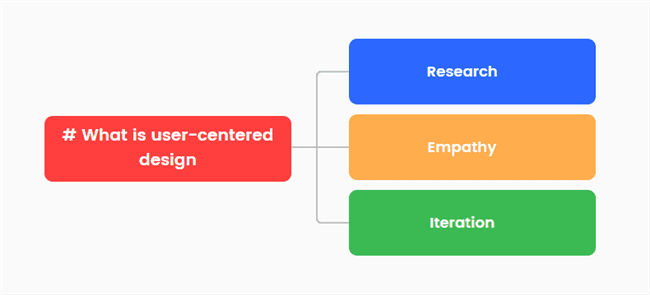
Pictorial Representation of A user-Centered Design
What Are The Four Elements Of User-Centered Design?
The designing of User-Centered Design has four important elements that a designer must bear in mind and work around them for a successful result. These elements provide a framework for creating designs that attract the user and make the process fun and interesting for them. Stick a little more to read through the four elements for creating a user-centered design.
Design For The User
One of the main elements of User-centered Design is the user’s involvement in creating it. The user don’t contribute to it while accessing a site, but design feedback and insight are already considered while designing the user-centered Design. The user must actively engage in designing so their needs are tailored before creating a product in the later stages. In this manner, costs and time are saved, and a business can use its resources to upscale and form more products.
Visibility
User-Centered Design should be created to highlight all the important elements well. This enhances user experience and increases the chances of a user making a purchase. Colors, characters, fonts, videos, and everything visual increase user visibility. Visibility is a major factor in user experience because they don’t want to waste time navigating through useless options.
Use Of A Feedback System
The User-centered Design should contain a feedback system. In this way, the user remains engaged and is updated with their progress in achieving a goal which is a huge plus. A notification on the screen depicting a tick or red sign induces dopamine levels in the user’s brain, automatically making it a little fun for the user. Also, a user is more likely to go for a website where they are kept in the loop throughout the process since it eliminates any confusion.
Clarity
The Design should contain all the information clearly. This way, a user can access what they require easily and in no time. It captures users’ attention and makes them revisit the site because of the good user experience. The proper layout with all information arranged in the right sequence is the way to go.
User-Centered Design and Design Process
This heading consists of a detailed step-by-step guide to how User-Centred Design works and improves your business and user experience in general. It is a bit longer process overall but will give good results in the end. Every step carries its significance in reaching our User-centered Design and has its level of difficulty.
Step 1. Research Your Target Audience and Their Mental Model
The first steps of a user-centered design revolve around figuring out your target audience. Knowing and identifying your users aids in creating a product that fulfills their needs. This step forms the foundation of user experience. The more well-researched user’s mental model is, the more likely a product can meet their expectations.
Although it takes a while to conclude your user’s needs, a major job is done once you do. While researching, a user’s behavior, goals, aims, and understanding of a product are deeply studied. A UX designer can perform this task by leveraging personas and creating a standard user picture with their habits considered. Using user journey maps is also encouraged and emphasized, showing the user’s actions to attain a simple goal.
Step 2. Understanding Your Business’ Aims and Requirements
In this next stage of the user-centered design process, we must work on understanding your business’s goals and the steps you need to take to achieve them after recognizing your target user and their pain points. Now it’s time to form a coherency between their needs and your business objectives. This step includes finding ways and methods to track your progress.
A user-centered design fills the gap between user and business goals. The designers, team members, and stakeholders present and devise ways to set a desired revenue goal and measure business prosperity on the same ground. The limitations and boundaries of a business are discussed in this stage, and the product is then designed in harmony with it.
Step 3. Crafting Design Solutions
In the initial stages of user-centered Design, we must determine the target user, their needs, and business aims. Moving onto the later stages, we focus on practically creating the Design. Ux designers can present their designers with various approaches like prototyping, wireframing, and other forms of visual media.
In this step, a visual representation of the product starts coming together, and different team members can add their valuable insight to improve it. You must ensure your Design is consistent with your user’s expectations and business objectives.
Step 4. Design Evaluation with A Feedback System
The last stage comprises evaluating the efficiency of your Design with respect to your user and business needs. This is usually performed via usability testing. This step helps overcome your lack of insight into a user’s input and helps a business improve and flourish. Some of your designs might go wrong, but this is why User-centered Design falls under the category of an iterative design.
While asking for feedback, it is important to ask about their true responses and avoid leading questions to obtain their true feedback.
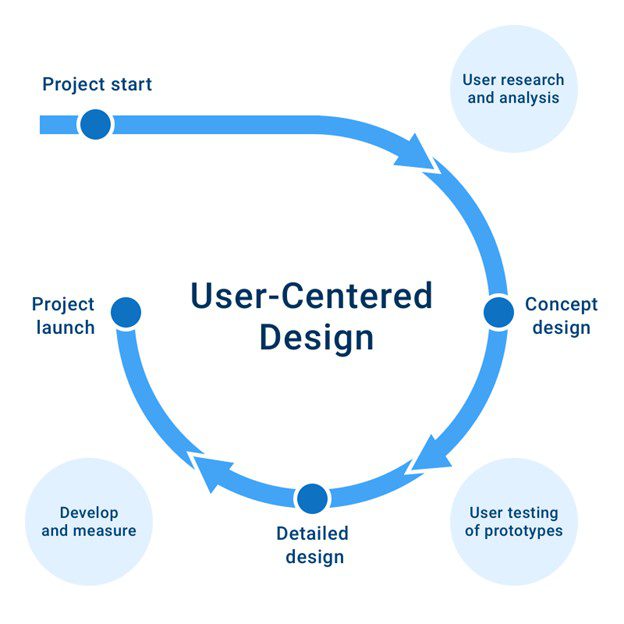
The Design Process of a User-Centered Design
Frequently Asked Questions
1. Why should a business opt for User-Centered Design instead of conventional design methods?
The user-Centered Design builds up and hones the growth of the business like nothing else can. By addressing users’ expectations and pain points, efficient products are created, ensuring maximum sales and good revenue. Moreover, it also saves the business’s and its team members’ resources, time, and effort. It also increases the loyalty of the customers toward the business.
2. What skills are required to become a good UI designer?
Creativity at the top is the skill that helps a person excel in UI design. Moreover, a blend of emotional intelligence, interpersonal skills, technical knowledge, communication, and typography aids well. The time taken by a person depends on their skills and learning curve, and capacity. A prior art interest creates ease, but as they say, you can achieve anything with the right dedication.
Final Words
Making the most of your user’ feedback and integrating ways and methods into making your designs for them is a daunting journey. But the results and outcome are always worth it. Implementing a user-centered design has evolved a lot of business and is now a considered approach to growing your brand. This article contains all the useful knowledge you need about user-centered Design. If you have any questions in mind, comment them down, and we will get back to you.

